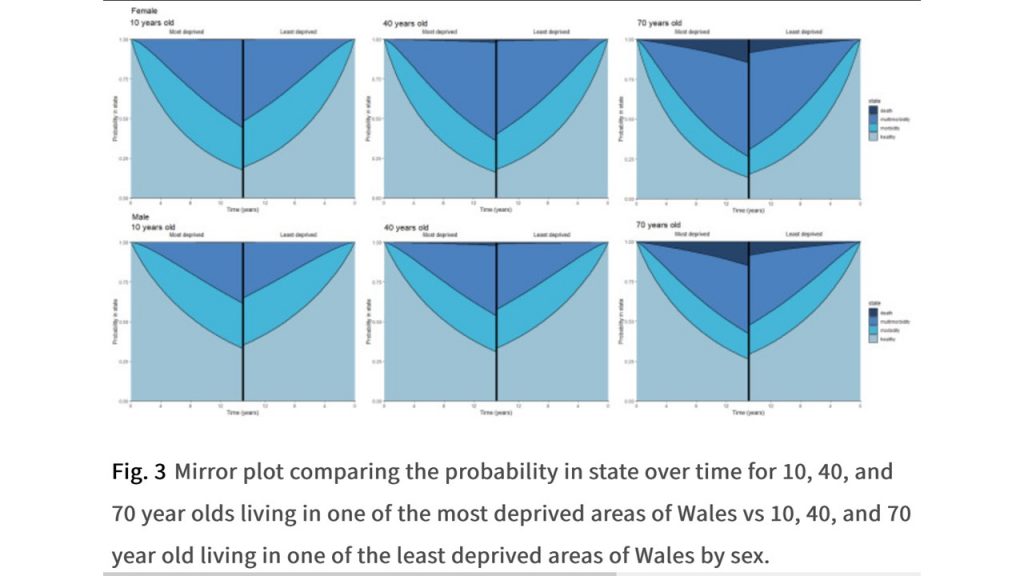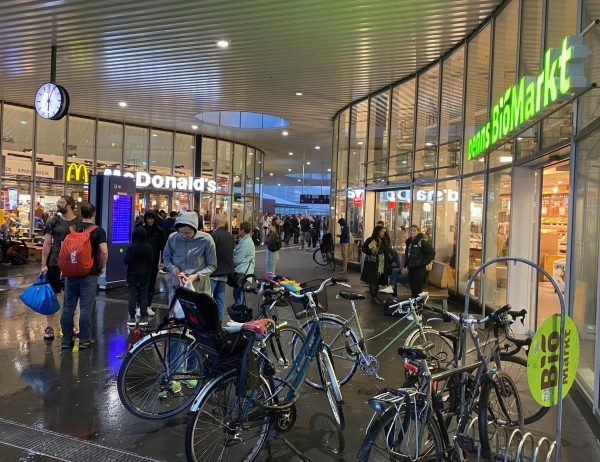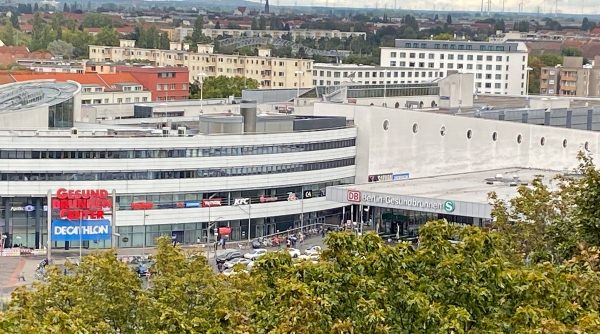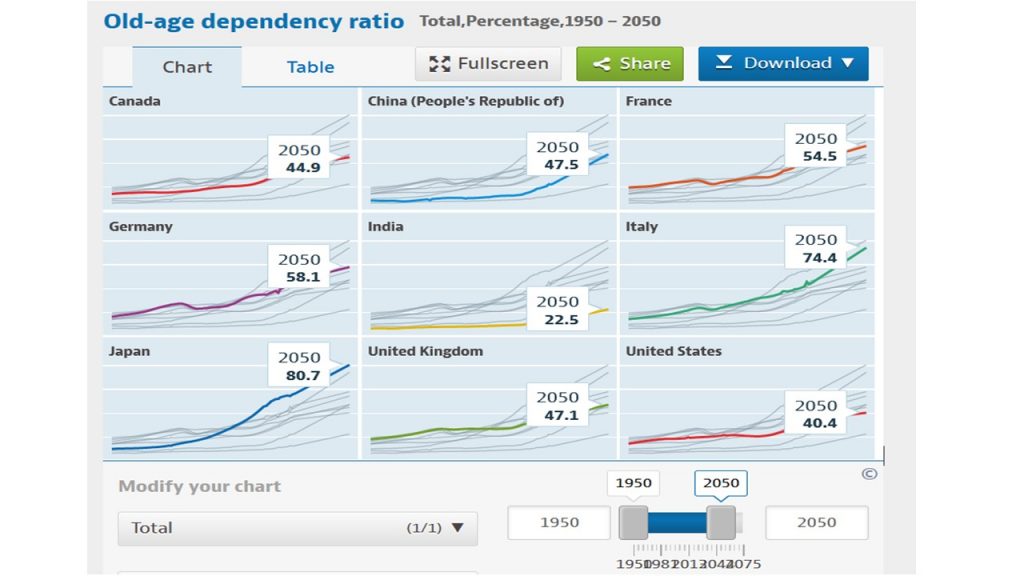Die Recherchen zu den Nachkriegseltern von Miriam Gebhardt haben eine persönliche und geschichtsschreibende Funktion. Die Zusammenfassung der Erfahrungen der Nachkriegseltern aus Biografien und Tagebüchern aus dem Literaturarchiv Marbach haben ein interessantes Psychogramm einer Generation von Eltern entstehen lassen, die sich meistens überhaupt nicht der Prägung durch die menschenverachtende, nationalsozialistische Ideologie bewusst waren und viele immer noch auch sind. Gut recherchiert und mit zahlreichen Originalquellen unterlegt beschreibt sie die Schweigsamkeit und Fokussierung auf wirtschaftlichen Erfolg dieser Generation von Eltern. Familienorientierung und Fixierung auf beruflichen Erfolg war gepaart mit traditionellen Rollenbildern von Frauen in sekundären Funktionen.
Spannend sind darüber hinaus die Anspielungen, wie die Erfahrungen unserer Väter und Mütter uns, die Babyboomer, bis heute prägen. Statusdenken überall, oben und unten in den Hierarchien klar bestimmt. Das christlich-konservative Menschenbild prägt vielfach neben den Eltern eben noch die Kindergeneration der Nachkriegseltern.
Wichtig bleibt es daher, sich dieser überkommenen pädagogischen Methoden bewusst zu werden, damit es keinen Automatismus des Weitertragens geben wird. Die Angst der Nachkriegseltern, die Akten und Beweise der Gerichtsprozesse oder Entnazifizierung einzusehen oder anzuerkennen, bezeichnet den meist verdrängten Gewissenskonflikt dieser Generation der Nachkriegseltern. Auf den Seiten 64-67 wird die Auswirkung der Gewaltgeschichte Deutschlands in der ersten Hälfte des 20.-ten Jahrhunderts, auf die Fähigkeit mit Emotionen umzugehen, bezogen.
Empathielosigkeit und mangelnde Fähigkeit zum Gefühlsausdruck begründet die erstaunliche Sprachlosigkeit einer Generation, wenn es um die Verbrechen der Nazizeit geht. Als geradezu tragisch bezeichnet Gebhardt die Empathielosigkeit gegenüber den eigenen Kindern und oft noch den Enkelkindern. Wegducken, Verschweigen und Wegdrücken scheint weiterhin die Prämisse. Miriam Gebhardt gelingt es vielleicht, eine Gesprächsbasis zu legen, die die Generationen zum besseren Verständnis aufnehmen könnten. Wahrscheinlich werden sich darüber aber lediglich die Kinder und Enkelkinder der Nachkriegseltern austauschen und versuchen, mehr emotionale Wärme in die Familienstuben zu bringen. (DLF-Interview, BR-Video Interview)
Flotow Jazzy
Es war wohl nur eine Frage der Zeit bis mir der Suchalgorithmus diverser Plattformen eine Jazzvariante einer Melodie von Flotow raussuchen und vorschlagen würde. In Verbindung mit einem Abstecher an Flotows Ehrengrabmal in Darmstadt war es dann so weit. Der überraschende Vorschlag eines Arrangements, das gleich mehrere Melodien von Flotow zitierte, war erstaunlich, aber eher gedacht für FreundInnen von Jazzimprovisationen, die Spaß an Kompositions- und Improvisationstechniken haben.
Die Beteiligung der Bayerischen Philharmoniker an der Produktion zeigt, was in den 70er und 80er Jahren so alles möglich war. Cross-over zwischen Musikstilen war sehr willkommen. Das ist meiner Einschätzung nach sogar noch vielfältiger geworden, aber nicht unbedingt häufiger. Also habe ich mich anregen lassen, die Herausforderung anzunehmen. Der Beginn schien mir zunächst wenig gelungen, die Referenz zu der bekannten Flotow-melodie nur am Rande hör- und erkennbar. Das Experiment wurde rasch zu einem anspruchsvollen Musikrätsel. Wie viele Melodien oder Werke wurden zitiert? Das wird zu einer musikanalytischen Aufgabe, die nicht so rasch zu lösen ist.
Für Personen, die wenig mit Flotow vertraut sind, wird das Rätsel vielleicht erst gegen Ende der Einspielung überhaupt als klassische, romantische Vorlage erkannt. Trick gelungen: Klassik mag ich nicht, aber das da schon. Das kann also vielleicht sogar Generationen zusammenbringen.
Der Arrangeur und Pianist Eugen Cicero, ein aus dem sozialistischen Rumänien geflohener Pianist und Komponist hat sicherlich in der oft als Trauermelodie bezeichneten Arie „Die letzte Rose“ Trost und Inspiration gefunden.
Laut seiner Biografie gab es dazu eventuell Anlass, die Selbsttötung seiner Stieftochter mit 14 Jahren. Letztere Geschichte ist in dem Roman und Kinofilm „Chritiane F. – Die Kinder vom Bahnhof Zoo“ ein Hintergrundmaterial gewesen. Vielen ist dieser Film in unvergesslich tragischer Erinnerung geblieben. Die Fentanyl-krise in USA und beginnend in Europa ruft solche Schrecken ebenfalls wieder in Erinnerung.
Die Discografie zu Flotow und die Verarbeitung durch Flotow der ursprünglichen irischen Volksliedvorlage könnte copyright-Expertinnen heute schier zur Verzweiflung bringen (Transponieren von D-Dur nach F-Dur erweckt mehr Tiefe statt Leichtigkeit und mehr Koloratur haben daraus einen internationalen operngängigen Hit gemacht, siehe Druckauszüge hier). Zu solchen Anlehnungen entwickeln sich heutzutage ganz umfassende Rechtsprechungen, die durch KI-unterstützte oder geschriebene Melodien nochmal etwas komplizierter werden. Einfach ignorieren geht nicht mehr. Das kann sehr teuer werden. Es bleibt uns ein passendes interdisziplinäres Lehrstück zum Thema Musik, Komposition und Gesellschaft. 
Publishing in War
The right to publish without censorship is one of the first rights that suffers during wars. This has been the case since warfare has used communication as a strategic weapon. Therefore, it is important to research the often, subtle forms of control and censorship applied before and particularly during each war. The printed press was the prime target due to the scope of readers that can be reached timely and repetitively. From the history of how to silence critical voices we can learn about the proceedings, which even today find lots of authoritarian regimes copying these methods.
Using many illustrations from the 1st and 2nd world war in Belgium, 3 major forms of resistance to censorship become apparent. (1) The most obvious is closing down a newspaper rather than endure censorship and thereby being forced to contribute to war propaganda. (2) With risk to their own life, many people in the resistance movements relied on information to actively counter the worsening conditions of life and oppression of opinions or criticisms. (3) The third way at these times consisted in quitting the active contributions, but it incurred the danger that in fact the newspaper continued to appear as before, although with lenient journalists and editors. Today we would frame the latter form of continued appearance of a journal as “continued as fake news”. However, the issue is more complicated than that. Apparently, the readership needed still access to vital information of how to get access to food stamps or other day-to-day necessities including distraction from the horrors of war as it became an enduring feature of life.
This is my short summary of the inspection of some of the historical newspapers that are available with online access and the most valuable summaries provided by Emmanuel Debruyne and Fabrice Maerten in their blog entries on the overview pages linked to the “Belgian War Press” project. These are also valuable sources that hint at war crimes committed at these times as the collaborating press did not shun away from bragging about crimes. The clandestine press was also important to coordinate the various resistance movements and spread ideas of how contributions could be made to weaken the occupying criminal forces.
At times of communication via internet, in addition to the printing press, the war of communication needs much more resources above all digital-savvy resistance movements. A huge task to train people time to enable them to identify fake news and careful exercise of spreading correct and verified information nowadays.
Image Source: Extrait du « Bulletin Intérieur du Front de l’Indépendance », daté 15-11-1942, CEGESOMA BG85, Brussel. 
Over tourism
There are a few very popular places that many people want to see or experience by themselves. In the Moselle valley Bernkastel-Kues is such a place. The small mediaeval market place with tiny houses, built with massive wooden structures attract a lot of visitors. Arriving by car or bus has created a mess around the place. Arrival by ship is even worse. Masses of people make a short stop and pour into the small city. Many places that become popular through Instagram, tik-tok or vimeo or youtube videos have a similar fate. Over tourism is no fun for locals. Some business interests thrive selling gadgets made in China to more and more Chinese tourist groups. This is probably the worst- case scenario.
Watching the ships pass by is somehow the better option. Watching the rowing sportspersons is even more interesting. Reflecting on sustainable development is a by-product. Tourism of the masses is part of the problem, Rowing couples part of the solution.
Ant population
Studying ant populations is a fascinating topic. Structures of these populations reveal various functions, each pursuing its own goals. Albeit the whole system is not breaking down due to well organised ways of communication. From a bird’s perspective human populations appear a bit similar to ant populations. Maybe our sets of tools we use for building accommodation for our species have an extended repertory. Our mass media might facilitate instant spreading of messages to all members of a specific community and even beyond our own hive. Watching a video of people moving around on a large square,
we are puzzled that there are almost no accidents occurring even over longer time spells. Speed adjustment is key. Respect for the other person’s trajectory is yet another precondition for the sake of the benefits for all. Even different modes of transport bicycles, scooters and the tram find their way crossing the square.
There seems to be an optimal way of adaptation to the more or less crowded place. A construction site may restrict the available space, but the crowd has little choice but to circumvent the obstacle. Climate or simple weather change necessitate adaptations. On a warm autumn day many persons decide to walk after work or school. The physiology of the population has an impact on speed patterns. Communication and meeting people is another function of the square. All these parameters are important elements of urban planning and a city’s adaptation to climate change. Cooling trees will structure meeting points and walking paths if there is too much sunshine in summer. Adaptation is easy if you start to adapt early. 
Städtepartnerschaften
In einigen Städten gibt es ganze Listen mit Städtepartnerschaften. Diese werden mit sehr unterschiedlicher Leidenschaft gepflegt. Berlin-Kiew ist eine Partnerschaft, die erst seit 2022 wieder richtig wichtig geworden ist. Solidarität mit den Menschen, Schicksale teilen und Unterstützung gewähren, wenn es nötig ist,.Das alles lässt sich einfacher bewerkstelligen bei etablierten Kontakten. Verantwortung für Vergangenheit und zwischenmenschliche Beziehungen überwinden viele Barrieren. Die deutsch-französischen Partnerschaften bilden ein weitgespanntes Netz, das viel zur Verständigung der Menschen beigetragen hat. Deutsch-polnische Partnerschaften ergänzen seit einigen Jahren die gegenseitigen Besuche und Kontakte, die die so wichtige Aussöhnung zwischen den Völkern befördert, gerade in Zeiten von konfliktbeladener Regierungspolitik.
Es reicht nicht, wenn Schulklassen einmal von West nach Ost oder umgekehrt fahren. Zum beiderseitigen Verständnis braucht es mehr Anstrengungen. „Spiele ohne Grenzen“, die populäre Art mit Spaß bei der Sache einen Wettstreit inszenieren, das hat in den 70er Jahren gut funktioniert. Feste feiern mit interregionalem Austausch ist ebenfalls eine interessante Alternative. Straßennamen Plätze mit dem Namen der Partnerschaft helfen wenig für wirkliche Verständigung. Okay, die Nazis hatten die Städtepartnerschaften zu übler Propaganda missbraucht, zur Indoktrination und Machtdemonstration in anfangs noch widerspenstigen Regionen. Gerade deswegen müssen wir andere Modelle der Verständigung anregen, die das Menschliche in den Vordergrund stellen. Lange Zugfahrten können Anregungen bringen, aber wer kann schon so viel Anregung noch vertragen. 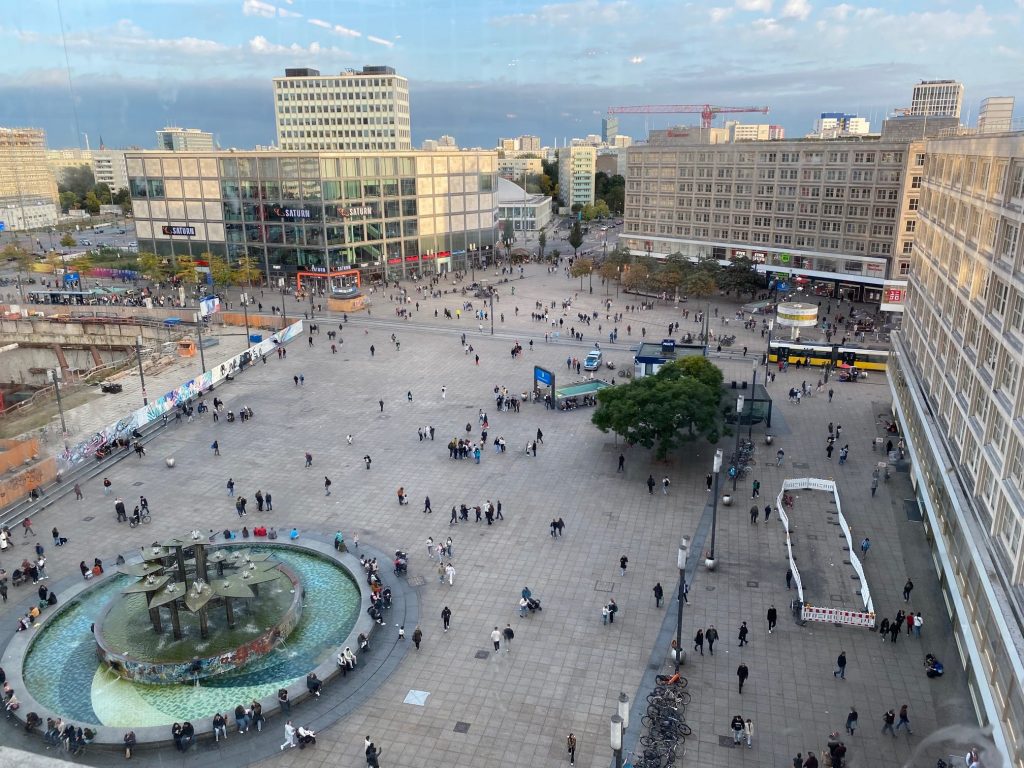
Human Rights
At times of war it is even more important to highlight the importance of respect of human rights. Russia continues to bombard civilians and destroys infrastructure that heats and feeds millions of people. Hamas in the Middle-East has killed more than a thousand civilians in Israel. Pushing violence beyond limits without respect of basic human rights is a very dangerous path for all human beings. Structures within each society need to take care of respect of these limits. The rule of law is fragile in authoritarian states or outright discarded. This makes human rights violations especially in wars or warlike conflict even more likely. The Human Rights Film Festival Berlin attempts to raise awareness to the facts of human rights violation wherever they occur across the globe. Following the link you have a chance to view some of the films online. The online flipbook allows to turn the pages of the magazine, which accompanies the film festival and provides a lot of additional information on the various categories. The section on the deep fakes is demonstrating how the use of fake news and fake images have an influence on us. The intensity of such fake news usually rises when elections approach in democracies. European elections will be seriously endangered through this kind of interference by Russian computerized disinformation networks and China is catching up on such misuse and systematic blocking of free information to its citizens. We shall have to be even more attentive to details in information and misinformation campaigns. Trusted websites and information channels of mass media have to step up their cybersecurity defences. Even small sites like this one have a responsibility to guard against abuses. In opening up the comments on the blog entries only for some time had the consequences of deleting “hundreds” of spam entries and undercover advertisements offering links to malicious sites.  Filtering such spam is a professional task and has relatively high costs involved. A potential threat to the freedom of opinion and freedom of speech. Support for film makers and documentalists is important to strengthen the support of human rights.(Image: Human Rights Festival Magizine p.18 by Jenny Brunner, HateAid)
Filtering such spam is a professional task and has relatively high costs involved. A potential threat to the freedom of opinion and freedom of speech. Support for film makers and documentalists is important to strengthen the support of human rights.(Image: Human Rights Festival Magizine p.18 by Jenny Brunner, HateAid)
Lebensverhältnisse
Wie weit sind wir mit der Angleichung der Lebensverhältnisse in Ost und West im Jahre 33 der Wiedervereinigung. Berlin liegt ja immer noch mitten im Osten der Republik. Da sollten sich im Osten der Stadt die Veränderungen seit der Wende bis zur Zeitenwende 2022 studieren lassen. Gebaut wurde viel. Das war, was viele vergessen haben, für Personen, die in der Nähe wohnen oft eine ziemliche Belastung. Wenn die Gebäude oder Infrastruktur dann endlich errichtet sind, denken wir, jetzt kehrt der Alltag wieder ein. Doch das ist oft weit gefehlt. Nehmen wir mal als Beispiel den neuen Bahnhof Gesundbrunnen in Berlin Nord. Alles neu, ein paar undichte Stellen am Dach, sonst funktioniert der Umsteigebahnhof recht reibungslos. Ein großes Einkaufszentrum in der Nähe mit den üblichen großen Handelsketten. Im Bahnhof wird der Reisende mit McDonalds Fastfood und einem Biomarkt empfangen. Das sieht eher nach Westen aus. Es gibt sogar keine Currywurst mehr in der Bahnhofshalle. Kulturschock für einige. Dazu noch die Abfahrten mit internationaler Destination jenseits der sowjetischen Großfamilie der kommunistisch verbundenen Länder.
Fotos können diese Eindrücke oft besser verdeutlichen als viel Text. Daher die kleine Bildergalerie mit Eindrücken aus dem Oktober 2023 nahe Berlin Gesundbrunnen. Das Einigungsdenkmal aus dem Jahr 1967 steht auf dem Flakturm im Park direkt am Bahnhof. Es bleibt noch viel zu tun bis die Teile wirklich zusammengewachsen sind und vergleichbare Lebensverhältnisse erreicht sind.
Nobel Literature2023
Jon Fosse has been awarded the Nobel prize for literature in 2023. Alfred Nobel donated the original funds out of his entrepreneurial empire build on the patents for dynamite. The explosives have ample use in peaceful times, but especially at times of war with noisy and destructive explosions. Experiments, with the tragic outcome killed together with 4 other victims his own brother. It did not stop him to pursue his entrepreneurial endeavour. In 2023 the Russian aggression continues to use explosives to kill innocent civilian victims. The sound of bombing continues to traumatise or destroy existences. The Nobel Prize for literature awarded to Jon Fosse does not bring those killed to live, but it is yet another reminder that silence or the absence of Alfred Nobel’s noise is invaluable. Norwegian Fjords and the water all around surely inspired Jon Fosse.
The scope of his writing ranging from theatre, prose to poetry and children’s books is comprehensive and impressive. This is probably all well known to many theatre-goers and readers beyond their mother tongue. For Germany there is an additional feature to the literary work of Fosse. Hinrich Schmidt-Henkel is the almost exclusive translator of the German language editions. This is already an impressive amount of work and long-term commitment to and from a translator as well as the publishing house Rowohlt. The Wikipedia entry for Hinrich Schmidt-Henkel shows the numerous works as translator of Jon Fosse as early as 2001 and still more to come. Additionally, Hinrich Schmidt-Henkel translates other classic authors from Norwegian into German in collaboration with the publishing house Guggolz located in Berlin-Schöneberg.
Besides the passion for translation Hinrich Schmidt-Henkel is active to defend the rights and salaries of translators. The threat to professional translation work by AI-programmes is imminent and just like authors and actors (not only in the USA) face continuing challenges for proper remuneration of their work. Being the German “voice” of Jon Fosse, it depends very much on specific contractual arrangements, whether a translator will also benefit not only from the popularity, but also in financial terms from the “windfall” profits reaped by authors and publishers. This constitutes probably a rather explosive issue, but worthy to be addressed eventually by the Nobel Committee. It is a “winner takes all” system just like with explosives, at least until next year’s awards. (Image Hinrich Schmidt-Henkel presenting Biermann in Staatsbibliothek Berlin 2023-9). 
Aging Challenge
Several countries face an aging challenge now and in the near future. The OECD provides some basic data, figures and projections. All data to calculate the aging challenge are more subject to change than they used to. The Covid-19 rise in mortality rates has implications as the number of premature deaths of the elderly (65+) has risen even in the economically advanced countries. The so-called old-age dependency ratio is a widely used indicator to assess the charge or pressure on the working-age population (20 to 64) to finance those in retirement (65+). demographic ratio is defined as the number of individuals aged 65 and over per 100 people of working age defined as those at ages.
Major factors that have an impact on the ratio are mortality and fertility rates as well as migration, but also participation rates in employment for those younger than 20 or older than 65 years of age. Seminal shifts in participation of women in the labour force contribute also to reduce the old-age dependency ratio. An influx of about 1 million of refugees who have immediately a work permit like Ukrainians in Germany have a substantial impact as well. Life expectancy is expected to rise again after the years of reduction due to Covid-19. In 2024 and 2027 these ratios do not move too much. Extending the time horizon to 2050, when people born in 1985 would start to retire shows more reason for concern. Whereas in 2024 France, Germany and Italy are still fairly close to each other (2.4 percentage points), the gap starts to widen as of 2027 (5.5 percentage points). In 2050 Italy is projected to have an old-age dependency ratio of 74.4%, about 20 percentage points higher than France.
Okay, in the long-run we are all dead, says an economist joke, but changes to increase fertility or allowing more migrants in are not in sight for Italy. Therefore, the urge to react is increasing there. Younger generations might not be able or willing to foot the bill of high pension expenditure in Italy. Compared to Italy or even Japan the pressure on France is much less pressing, contrary to the national government’s opinion and policy initiatives to increase retirement age without parliamentary majority.
Source for projections and figures: OECD (2023), Old-age dependency ratio (indicator). doi: 10.1787/e0255c98-en (Accessed on 04 October 2023).
Avoidable Mortality
Mortality in many instances is avoidable. Estimates Mühlichen et al. (2023) for Germany are as high as 19% of all deaths in the years 2017 to 2019. For men the figure is as high as 24%, for women “only” 13%. The scientific interest in the concept of avoidable death originates in the interest to indirectly gauge the efficiency of health systems. In order to do this the authors estimated cause-deleted life tables in a fine graded regional fashion. Avoidable deaths are defined as deaths that occur before the age of 75 and are either classified as medically preventable or preventable through a different life style. The study applies a quasi-experimental design in comparing German speaking regions within Europe. This allows to measure the influence of health care systems on a general level within Germany, Austria, Switzerland and South Tirol in Italy. The study corrects for different age structures in these regions. For Germany avoidable deaths are substantially higher in the North than in the South. Additionally Eastern parts of Germany have higher avoidable deaths. Even the best performing regions in Germany have higher rates of avoidable mortality than Switzerland.
The differential to other countries health systems is worth a concern, because the expenditure in the German health system per 1000 population are among the highest in Europe (OECD 2021). Despite the high expenditure per head, avoidable mortality remains particularly high for German men and in the North and East of Germany. Lack of prevention of unhealthy life styles is most likely the decisive factor to explain the disappointing results. There might be another “unaccounted” risk factor that originates in the lack of sufficient preventative health care and environmental risks during the young age of the regional populations. 33 years of unification and a cut-off age of 75 mean that in East Germany the oldest people lived through 40 years of high pollution coal as primary heating system. Similar to Northern and Western Germany little concern and careless use of risky fertilizers might drive higher mortality decades after exposure. Life style patterns might additionally contribute, but are harder to assess in comparison. Research to clarify these differentials are just at the beginning. A valid conclusion remains: prevention is key, but it has many facets. 
Nations Fail
Ever since Adam Smith wrote on the “Wealth of Nations” the topic concerns social scientists. The discourse around the wealth of nations has become even more fundamental these days. Beyond wealth calculated in economic terms we are convinced to add well-being of the population as well as the state of the environment into the accounting procedures like national accounts. But wait a second. Similar to the term wealth we have to widen our perspective in what is considered to be a nation. Shifting borders through wars (Russia aggression on Ukraine) or separatist tendencies of regions, (re-)unification of Germany or Korea (eventually) show that the nation is a concept in flux. Considering migrants from former colonies still as having residential rights in the colonising country shows, there is more to nations than a one size fits all nation concept.
Daron Acemoglu and James A. Robinson had published the book on “Why nations fail. The origins of power, prosperity and poverty” already in 2012. On the 3rd of October Germany celebrates its re-unification only because the Russian dominated German Democratic Republic (and the other Eastern European satellite states under Russian control) can be considered as a failed state. These Russian dominated states crushed private initiatives and build corrupt systems where party allegiance and hierarchical structures were overemphasised. Following Acemoglu and Robinson (chapter 10) the lack of diffusion of prosperity is likely to be the root cause. Even similar to the French revolution, which brought about tough measures of redistribution, the external threats to the post-revolution France demanded subscription of masses into armies to defend the young republic against aristocratic rulers in the surroundings. If monarchy in France is a failed state, the post-revolution France survives due to high identification with the republican idea. The Soviet dominated Ukraine is a failed state, but the Ukraine of today resists due to its willingness to defend its own republican ideals. To get virtuous circles of development started, inclusiveness across the board is necessary. Leave nobody behind, seems to be a shortcut summary. It is much easier said than done. Loosing younger generations in the sense that they no longer subscribe or feel part of an inclusive wealth of the nation is a highly dangerous path. Failed states have a history in failed inclusive social and economic practices. Democracies are at risks just as much as authoritarian nations. However, democracies have better institutional settings to address the lack of inclusion and in multiple ways.
When I celebrate the 3rd of October in the Federal Republic of Germany I celebrate (1) the accomplished failure of the GDR, its undemocratically elected elites, corrupt institutions and the failure of the thousands of willing collaborators of the Russia-backed regime; (2) the peaceful resistance movement, (3) the relatively short-lived humanitarian focus of the Russian leadership at the time to not send in the tanks and (4) the willingness of the FRG to support 20 million new citizens for many years to come (5) the allies of the FRG to accept the potential security threat of a strengthened Federal Republic of Germany, which might entail a shift in the balance of power in Europe.
And yet, even in 2023 we pose questions on what is the concept of failure, when authoritarian regime can still survive for sooo long and some still accomplish extensions. We keep questioning the sense of the term “nation” in modern times and across the globe. Too many wars are still fought in the name of a “nation” even if only a handful of military-supported leaders and single autocrats try to impose wars in the name of some rather vague or plainly mistaken claim of nationhood.
On the 3rd of October we celebrate that “nations can fail” opening a path into a more prosperous and inclusive society. Some nations fail, just because they were no nation in the first place. The GDR was such an artefact of international compromise as part of the overall “balance of power” and the Cold War. The result of this process gives so much hope to other divided nations (Korea) or nations under authoritarian oppressive rule. 
Marathon Prep
Most people, including many sociologists, believe preparation for a marathon is a rather lonely exercise. During hot summers you get up early and run alone across the streets in your neighbourhood or in a green area. Even on weekends you tend to put on your running gear at least once to chip in a few extra miles or once or twice before the marathon a longer distance test run of 20, 25 or 30 kilometers. Just for the sake of testing to withstand more pain, like in the real event. Running guides in form of books, apps reach “cult status”. In sociology we teach students about the social trends of individualisation ever since the book by Putnam “Bowling alone”, which depicted the new kind of lonesome person going alone to the bowling hall for exercise, as social life seems to evolve towards “individualised” leisure time and social life. Social capital seems to get lost on the way.
“The New York Times International” published an article and photo by Lauren Jackson on September, 27 (2023) page 17 in the sports section, which states the not so new phenomenon of “run clubs” (see extract on image below). These clubs bring runners from all walks of life together on a regular basis to train jointly and add a social function to the club as well. Just like previous sport clubs or socialising bowling groups did before, they meet and greet as well as party and celebrate together. Even travelling thousands of miles to distant events occurs in groups. Berlin seems to be a very attractive location for such clubs to go to. For some the sport stays in front of the activities, but for quite a few the social and party-like atmosphere is just as important. Even a local Berlin newspaper portrayed an older runner who stops in-between to have a small glass of alcohol-free beer on a terrace 2 steps from the official track with friends and family. Most people take their time record rather seriously, but the event is to enjoy community and celebration. Lauren Jackson even equates this to some forms of religious practice. I’s rather call this the other side of the same coin. Lone practice and meditation like running prepares a person to enjoy community (again). Extremes in both directions are part of the bell-shaped probability distribution of runners across the lonely-crowded spectrum of running experiences. The Marathon 42km 195m certainly has some historical even mystical connotation. While watching the finishing line at 42 km, just after the hypothetical run from Marathon to Athens in ancient Greece, you see many worn out persons, but also the many happy faces. After the run you meet your peers to exchange on stories and anecdotes around the track. Success and failure, just as in other team sports become a topic of conversation and shared experiences. These are community building events as wheel chairs and hand-driven bikes are part of the Berlin event as well as the in-line skaters the day before. In Berlin you get a feeling that running world records (women 2023, men 2022) can go hand in hand with the running fun for many. From “bowling alone” to “running together”. Sounds good to me. 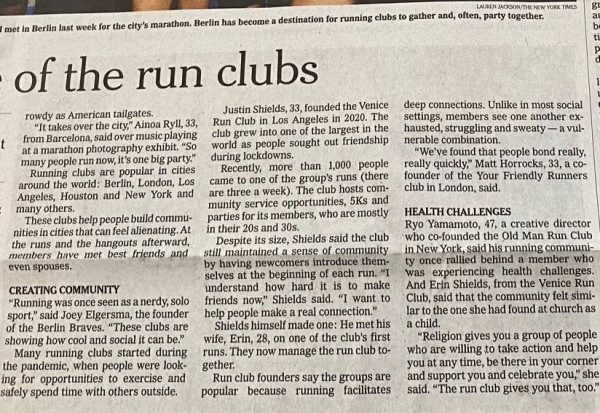
Marathon Berlin2023
Berlin celebrates its 49th Marathon in September 2023. The first Berlin Marathon in 1974 had less than 300 participants. To separate this from Olympic games, these runs were coined “Volks-marathon” at the time. 5 events had already taken place in New York when these annual events started to catch on in Berlin. In 2023 there are close to 50.000 participants mostly drawn from a lottery of about 500.000 entries. So, you can call yourself one of the lucky few, if you manage to get a place. The event is a drain, but it creates a fantastic hype not only for the runners. The many cheers and bands along the running track transform the inner city into a huge party zone. The Berlin marathon is known around the world for its fast track. In 2023 Berlin is proud to be the city where both the women and men’s world record are held currently at the same time. This is quite an achievement.
Personally, I enjoy more the courage, stamina and will power all the participants gear up to. Months, if not years of preparation find their climax in getting to the starting line in the “Tiergarten”, just where you had (have) the “Love Parades” some weeks before. The finishing line is 300 meters away, once you have passed the “Bandenburger Tor”. From a public health perspective, we applaud the encouragement such events give to all those that have an active life style and to some to get started on such a trajectory. The media coverage is enormous and with all sponsorships, equipment, hotels, meals and travelling involved such events have become big business, too. No such event and going to health limits is without risk. This is, of course, also the case in Berlin. The emotions run high for almost all, except for a few, who go too far beyond their limits.
The medical assessments of exhaustive endurance sports are an ongoing research issue. A recent literature review reveals that there are quite substantial numbers of previous smokers or persons with previously unhealthy life styles participating in popular marathons. Running, probably, has been part of overcoming bad habits of the past. It is therefore, not surprising to find that some of the participants are at a risk of wanting to run too much or too fast for their current state of health. The hypnotising effect of music and stimulation from being part of a huge crowd, contribute to the effect to go beyond limits. Cardiovascular events or brain lesions are, therefore, part of the ex-post risks of participants who have had specific medical check-ups. Know your limits, train them wisely, but respect that limits exist. This seems to be a reasonable summary based on sports medical research. Berlin 42km finishing line2023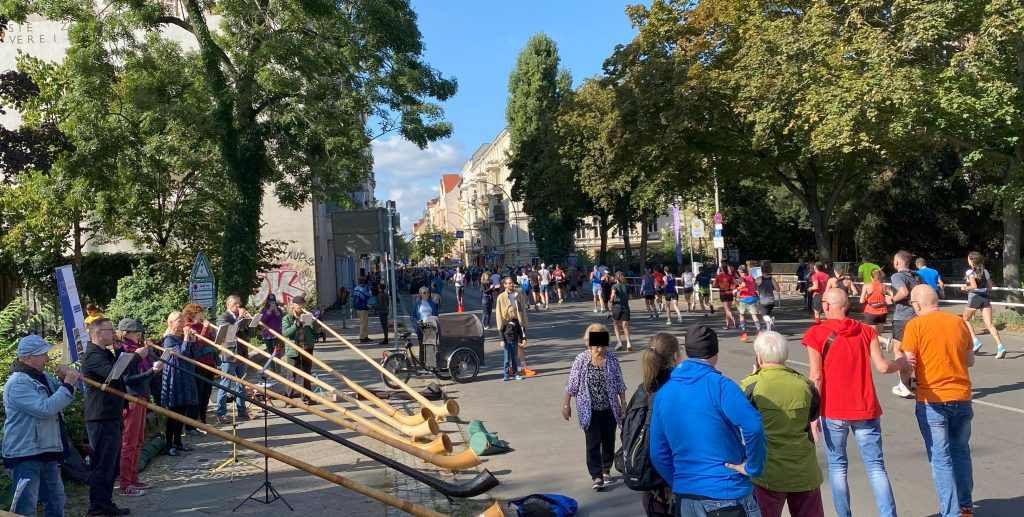
Luftschloss
Im K21 der Kunstsammlung Nordrhein-Westfalen ist ein Luftschloss eingebaut worden. Es ist das einzige mir bekannte Luftschloss, das für alle Besuchenden begehbar und fühlbar ist. In wahrhaft luftiger Höhe von 25+ Metern über der Eingangshalle der Kunsthalle K21 und zentral unter der gläsernen Dachkuppel platziert, lässt sich mal so richtig abhängen. Nahezu schwebend kann die weiträumige Installation von Tomás Saraceno erklommen werden. Die Schritte und wippenden Bewegungen der anderen BesucherInnen lassen sich unvermittelt ebenfalls erspüren. Du bist nicht allein, im originären Sinne des Wortes. Die buchstäbliche Vernetzung mit allen anderen Personen werden durch Schwingungen des Netzes zu anderen Kletternden oder Chillenden übertragen. Eine unmittelbar erlebbare Erfahrung der Verbundenheit mit unbekannten, anderen Menschen stellt sich ein. Die Verbundenheit innerhalb einer Gesellschaft wird eindringlich verdeutlicht. Die Angst, durch die Höhe verursacht, weicht rasch der freudigen Erfahrung der Schwebung und der kindlichen Erfahrung der Suspension. Nahezu freischwebend in der Luft, im Orbit erlebt jede/r sein eigenes Luftschloss inmitten von transparenten Kugeln, die wie Planeten wirken. Gleichsam real, aber dennoch imaginär durchwandern wir die Installation immer im Bewusstsein, dass andere um uns sind, die unsere Schritte, Möglichkeiten und Haltungen mit beeinflussen. Vom Luftschloss träumen oder im Luftschloss träumen, beides ist dort machbar.
CO2 freundlich lässt sich die Erfahrung in der APP Aerocene fortsetzen. Der für unser Wetter so bedeutsame Jetstream wird zur imaginären Flugerfahrung genutzt und mit recht aktuellen Daten gespeist. Die Verbindung zu „Earth and Space Sciences“ ermöglicht die Einbettung der sozialen Erfahrung in einen noch weiteren Kontext.
Die eigenen 4 Wände sind die Grenze. Das galt schon früher nicht. Weit darüber hinaus lassen sich neue Möglichkeiten erschließen, die nicht umweltbelastend sind. Selbst die Reichstagskuppel in Berlin sehe ich plötzlich mit ganz anderen Augen. Mehr als Möglichkeitsraum, statt der traurigen Vergangenheit und der zerstrittenen Gegenwart. Was wäre die Kunst, wenn sie nicht zum Träumen anregen würde. 
Generationswechsel
In den öffentlichen Bibliotheken ist ein Generationswechsel der Besuchenden überfällig. Traditionell finden sich 4 unterschiedliche Gruppen von Personen in den öffentlichen Bibliotheken wieder. Da sind (1) die bildungsaffinen Rentenempfangenden, (2) die Eltern mit Kleinkind(ern), (3) Wärme- oder Kühle suchende Menschen der Umgebung und (4) die Schul-, Hochschul- oder Examensvorbereitenden. Soziologisch betrachtet ist das ein interessantes Aufeinandertreffen von gesellschaftlichen Randgruppen.
Die „Neue Zentralbibliothek im KAP1“ (Düsseldorf) hat aus diesen meist unverbunden nebeneinander operierenden Gruppen eine kommunikative Gemeinschaft produziert. Aktion und Interaktion ist nun angesagt. Der Flyer betont richtungsweisend: „Menschen, Bücher, Räume“. Fortan soll der Mensch und seine Lernfähigkeit im Vordergrund stehen, nicht mehr nur die Bücher. Dazu braucht es meistens anders oder umgestaltete Räume. Lernen war immer schon interaktiv und nur in Teilen allein im stillen Kämmerlein. Dazu braucht es Labs als Lernräume und nicht nur die Stille der „Page-turner“. Lernboxen, Lernstudio, Musikstudio sowie eine „Kreativschmiede“. Dort wird heute gepodcasted, 3D gedruckt und es werden social-media Kanäle entworfen und betrieben, immer schön generationsübergreifend. Voneinander Lernen ist das Motto nicht mehr nur nebeneinander und im Wettbewerb um die beste Bewertung. Kollaboration und gesellschaftlicher Zusammenhalt brauchen neue Räume, dem KAP1 in der Düsseldorfer Zentralbibliothek ist dabei schon viel gelungen. Die zentrale innenstädtische Lage ganz nah am Hauptbahnhof ist ein zusätzliches Asset. Ansonsten hätte ich mich wohl nicht auf der Durchreise dorthin verlaufen. Ein Random-Walk in Bahnhofsnähe, verursacht durch verpasste Verbindungen der Bahn, hat zu einer unerwarteten, bereichernden Zwischenpause geführt. Der Ausblick aus dem Café auf das übliche innerstädtische Verkehrschaos konnte umgeben von Alt und Jung richtig genossen werden. 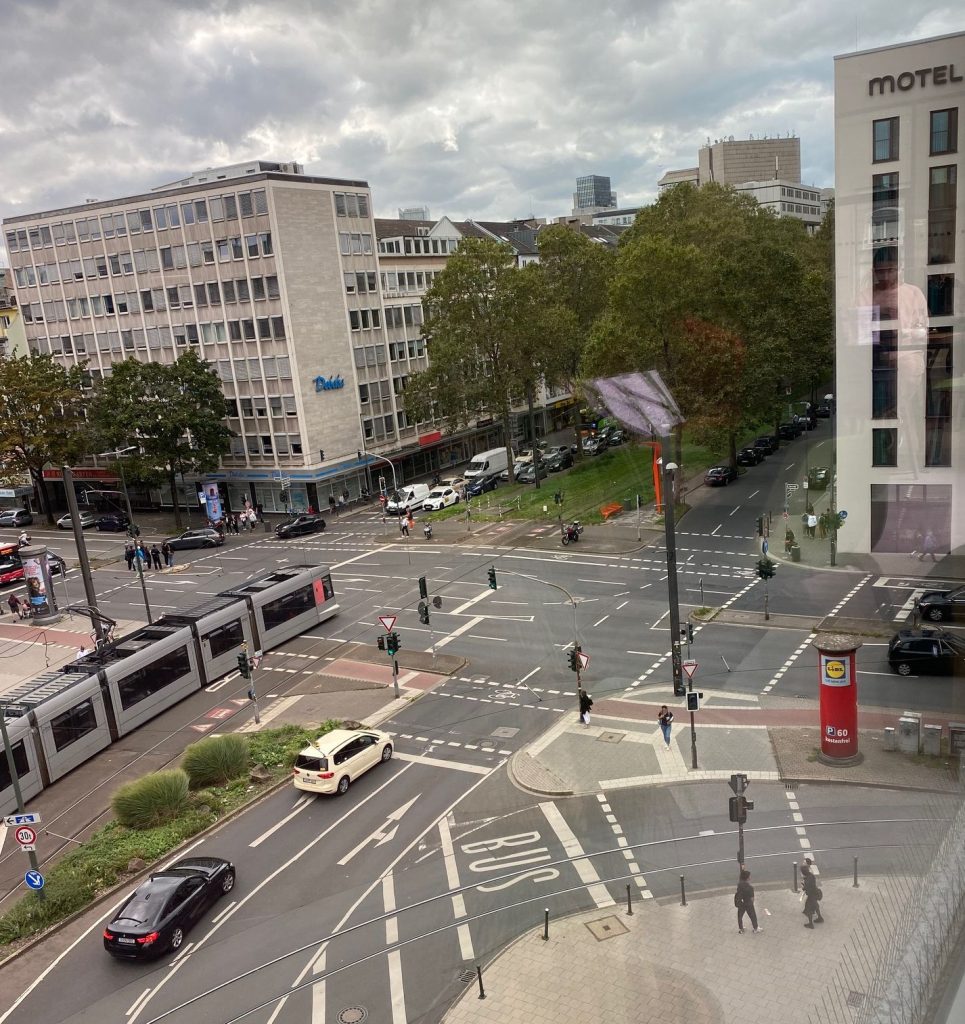
Li-Be
Jede/r hat so seine Assoziationen mit Li_be. Für eine kleine Gruppe von Literaturbegeisterten steht Li-Be seit langem für das Literaturhaus Berlin. Das war nun ebenfalls, anlässlich des Tag des Offenen Denkmals, im September 2023, als solches zu besichtigen. Zentral am Ku’damm plaziert, in der benachbarten Fasanenstraße, liegt diese geschichtsträchtige Villa in mitten eines kleinen Gartens. Trotz wechselvoller Geschichte konnte die Villa als Ganzes erhalten werden, nachdem der Denkmalschutz Veränderungen untersagt hatte. Das Haus der Li-Be hat wirklich alles gesehen, was Leute sich unter Liebe so vorstellen und wahrscheinlich noch einiges mehr. Nach den familiären Nutzungen der Gründerzeit, wurde in den wilden 20er Jahren dort ein russischer und ein arabischer Studentenclub eingerichtet in Verbindung mit der Humboldt-Stiftung, die sich auch heute noch um den wissenschaftlichen Austausch bemüht. Das Rote Kreuz hatte eine erfolgreiche Suppenküche dort in der unmittelbaren Nachkriegszeit betrieben. In den 60er Jahren war es ein Nachtlokal, aber auch einige Jahre ein Studio für modernen Tanz von Manja Chmiél, einer Schülerin von Mary Wigman. Die heutige Nutzung hat weiterhin viel mit Liebe zu tun. Lesungen und Workshops laden laufend ein, sich mit Literatur zu befassen. Der Zeit angemessen finden sich in den Archiven des Literaturhauses zahlreiche Prominente AutorInnen, die Lesungen dort abgehalten haben. Starke Frauen bildeten dabei seit den Anfängen als Literaturhaus einen Schwerpunkt. Nobelpreisträgerinnen gehören zu den Vorleserinnen seit geraumer Zeit. Annie Ernaud und Herta Müller traten schon lange vor den Nobelpreisen dort auf. Toni Morrison und Olga Tokarczuk im Jahr der Preisverleihung oder kurz danach. Ein wahrlich toller Ort und dennoch keineswegs mit BesucherInnen überlaufen. Es bleibt eben so eine Sache mit der Liebe, auch im Li-Be. 

Write, write, write
A poster announcing the “internationales literaturfestival berlin 2023” prints in big letters: “Read, read, read, … 14 times”. This is a quote from Werner Herzog when he was asked what makes a good filmmaker. The message from Manjeet Mann to the young audience at Berlin added to this: “write, write, write”. At least this was my impression as a summary of the talk and her short readings from her novel in verse “The crossing”.
The lecture hall of the “Stabi” was packed with students from high-school who felt at ease with the English language presentation and talk. The host Shiva Mesgarian managed to get the crowd of students to ask questions in the huge lecture theatre.  Manjeet was giving a lot of insights into writing, editing, motivation and the difficulty to give a voice to persons from marginalized backgrounds. In her case as a person of colour herself, born and raised in England with additional links to India, she took issue with the topic of refugees. Living in Folkestone (Kent), she is confronted with people crossing the Channel on a daily basis.
Manjeet was giving a lot of insights into writing, editing, motivation and the difficulty to give a voice to persons from marginalized backgrounds. In her case as a person of colour herself, born and raised in England with additional links to India, she took issue with the topic of refugees. Living in Folkestone (Kent), she is confronted with people crossing the Channel on a daily basis.
Her book “The crossing” is actually building bridges between countries and continents. Her entertaining way to talk about her hard work as writer motivates, inspires and encourages young persons to pick up their pencil and/or notebook to start writing. Just don’t stop. Journaling helps. Take your emotions of an issue seriously, then work on it. Give characters a voice who have not received much attention. Go out and interview persons to get authentic input.
It is not about appropriation of a story. It is about meeting and exchanging with marginalised persons. Return your written pieces to those “sensitive readers”, whose story you attempt to develop. All this takes time. Re-writing is an important element as well. “Having written the story for yourself, you then re-write it for the readers”. Edit, clarify, sharpen, blur, attend to detail – all this helps the reader to follow and enjoy. These were the messages to all the students who were grateful for advice as the new season of essay writing in school, university and beyond is about to start. 
Energy Food
For more than a decade now researchers have shown the link between energy prices and food prices. At first sight this might seem surprising. In traditional or romantic associations with growing food, there is no link between the cost of energy and food production. Growing crops in your garden does not need more than sunlight, soil and water. Yes, that was long ago. Industrial production of food is heavily relying on energy to heat, feed and water plants or animals. Additionally, the supply chains have become far more distant, which increases the CO2 footprint even further. Therefore, it is no longer surprising that a great number of econometric studies confirm the close link of energy prices and subsequent pressure on food prices. This is not restricted to Europe, but has reached global contamination.
Enjoying seasonal local food is a double catch solution. You grow according to local weather conditions and use traditional conservation methods, if the crop is exceeding your demand at that time. Providing heating for animals to increase productivity or quality of products appears to be one of the most wasteful ways to further increase the spiralling up of energy and food prices.
In agricultural science there is a lot of research into the “energy intake” of animals to better grow or produce more milk etc. This is the expensive intermediary step using energy to produce energy intake for animals rather than humans. It is surprising that we take so many years to address these well-known linkages that have turned to serious problems after Russia’s war on Ukraine. Agriculture and farmers can be part of the solution rather than a problem themselves, if the link of energy consumption and food prices is taken seriously. 
More Design
How about a subject like Design in school. Rather than the same old boring teaching manuals in art, music, economics or social science, young learners have always been attracted to making things by themselves. The theoretical context is then coming to the subjects and objects more naturally. Economics as market design, design social security for platform workers, sound or furniture design could bring in the creative potential of the learners. Lessons learned through subsequent applications or realizations of prototypes allows the link of theory and practice. A school garden would even be a fantastic cross-discipline learning opportunity.
The most difficult part is probably to find competent coaches to guide the learners exploring and designing. The world is not perfect, so why should learners not be confronted with imperfections in learning set-ups. The most fun part in science is when experiments go wrong, hopefully not too badly though. Catching learners by their curiosity is very likely to get them hooked on more thorny scientific questions as well. Across Europe holidays are coming to an end and millions of pupils go back to their benches and rigid curricula. We should really care more about the next generation.

Europa Meer
Europa und das Meer, so lautet der Titel eines Buches und Katalogs zu einer Ausstellung des Deutschen Historischen Museums (DHM) aus dem Jahr 2018. In 2023 im August sind die Zeitungen voll mit Artikeln über Meererwärmung und die schwerwiegenden Folgen für Menschheit und Bio-diversität. Die Geschichte der Beziehung zwischen Europa und dem Meer ist leidvoll und euphorisch zugleich. Alljährlich zur Sommerszeit wird das Mittelmeer von Wellen mit Touristen überspült die „over-tourism“ erleiden müssen. Menschen sind oft eine in Massen, aber nicht in Maßen, auftretende Spezies. Das Meer spielt zusätzlich eine faszinierende, verheißungsvolle Anziehungskraft aus. Europa sieht sich zudem gerne noch als Dreh- und Angelpunkt der Weltgeschichte.
Der Ausstellungskatalog enthält lesenswerte Beiträge von der Antike übers Mittelalter bis in die Neuzeit. Die Thematisierung von Herrschafts- und Handelsräumen , Brückenschlagen und Grenzziehungen, Meer als Ressource bis hin zum Sehnsuchts- und Imaginationsort bieten eine originelle Herangehensweise. Schon 2018 enthielt der Katalog einen Beitrag zum Massengrab Mittelmeer sowie zum Sehnsuchtsort Hafenmetropole Odessa.
Migration in ferne Länder samt der Verheißung eines vermeintlich besseren Lebens sind so alt wie die Menschheit. Die Weite des Meeres suggeriert zusätzlich die Möglichkeit des Neuanfangs und Althergebrachtes, hinter sich zu lassen. Freiwillig oder gezwungen, das ist dabei oft die entscheidende, unterscheidende Frage.

Politicians and Literature
Biographies as well as autobiographies of politicians receive a lot of attention. Even spouses of politicians or artists benefit from this sensational effect (Obama). But beyond these ex-post or after-office effects, it is more interesting to look at what literature or authors have had an impact on the life and, maybe, office of presidents. So-called literary couples or specific relationships between artists or authors can reveal interesting additional information to understand “what made these personalities”.
In “Le Monde” there is a series of articles devoted to such relationships. It is a kind of romantic summer reading satisfying nosy looks into the private lives of politicians and other celebrities of a more intellectual kind. On the 25th of August 2023 it was the turn of the relationship between Francois Mitterrand and Marguerite Duras entitled … “menteurs sublimes, forcément”.
Their long-standing relationship had in common to cover-up some of their failures in the Nazi-occupied France.
Post-war each person had more than just sympathy for the other person’s accomplishments. The interesting feature to accept advice and criticism from the other person is rare for highly exposed persons. Relationships between artists and presidents are somehow tricky for both. As artist you can get instrumentalised by power rather quickly. As politician you run the risk to open-up too much, as they are rarely unobserved. Paparazzi or other agents go a long way to get or make up a good story. “Tell me what you read, and I tell you who you are”. The relationship between literature, politics and politicians will never be easy. It remains good stuff for literature and cinema. 
2023-8-24
Das Datum ist mit dem Gedenktag der Unabhängigkeitserklärung der Ukraine verbunden. Gerade die Aggressionen Russlands wollen diese Unabhängigkeit zurückdrehen. Das wird nur mit viel Kraft und Ausdauer gelingen können. 18 Monate im Krieg mit Russland war uns unvorstellbar. Wir werden unablässig unterstützen müssen, damit die Freiheit und Unabhängigkeit aller Teile der Ukraine wieder hergestellt werden kann.
Das Datum sorgt für zusätzliches Gedenken. Jetzt beginnt die Einleitung von durch Atomkraftwerke verunreinigtes Wasser in Fukushima. Das, was nie passieren sollte, hat sich doch als Tatsache bewiesen. Verunreinigtes Kühlwasser wird auf die Welt verteilt durch Einleitung in den Ozean. Private oder nationale Profite werden eingestrichen, aber die Kosten eines GAU (größter anzunehmender Unfall) werden auf die Weltgemeinschaft verteilt.
Ein Tag zuvor hat Indien, anders als Russland, seine Raumkapsel auf dem Mond ohne Bruchlandung aufgesetzt. Großmachtstatus verlangt auch überdurchschnittliches wissenschaftliches Engagement. Das lässt sich mit einer Mondmission sicherlich demonstrieren. Neue Demonstrationen von Unabhängigkeit durch große oder wirtschaftlich erstarkte Staaten werden eine multipolare Weltordnung befördern. Das passiert nicht von heute auf morgen. Es könnten sich vielfältigere Verhandlungsmöglichkeiten auf internationaler Ebene eröffnen. Noch mehr Geduld in der Diplomatie wird nötig sein. Gleichzeitig ergeben sich aber auch größere wirtschaftliche Druckmittel auf Staaten, die internationales Recht verletzen.
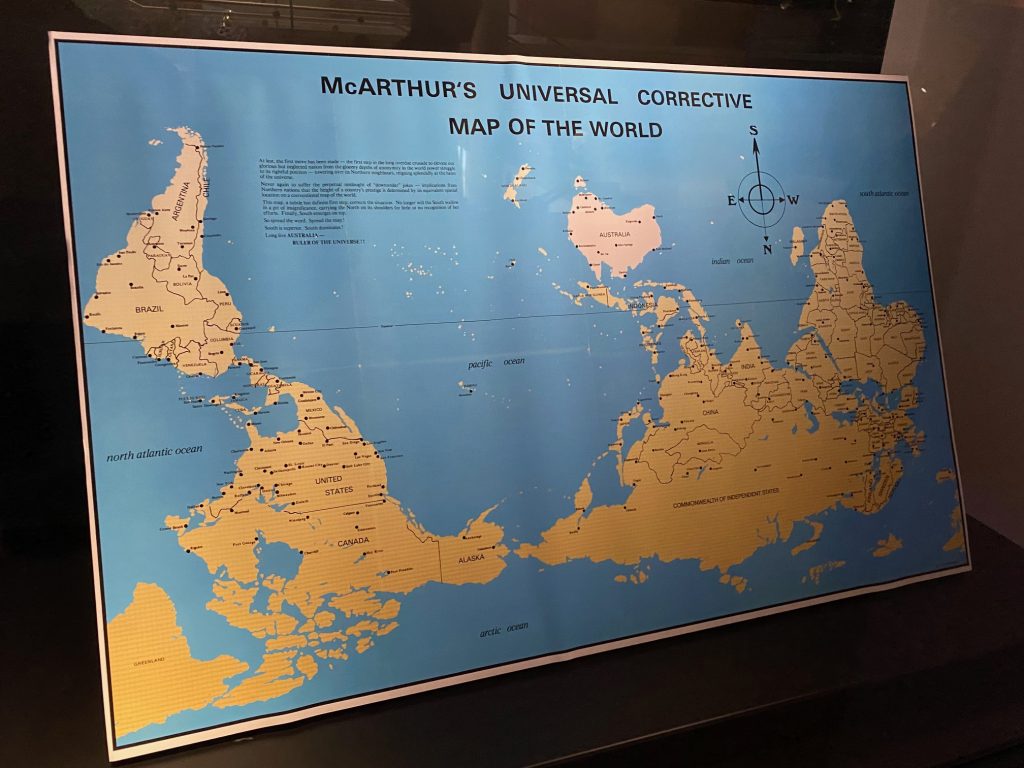
Calendar Time
We all use calendars to organize our time almost unconsciously. This is helpful to organize and synchronize our time together. Working time, family and individual time tend to use the same time structure to facilitate community. Work arrangements depend a lot on a common method to structure time. The work-life balance hinges a lot on synchronization of calendars and joint time slots. Towards the end of the annual vacation period in Europe the annualized change of calendars is still common practice despite most people going digital. Annual overviews allow to allocate and potentially synchronize calendars for major events or periods (next break, period devoted to learning, family planning etc.). A cleavage that differentiated Europe in the analogous times was that some countries like Germany use(d) chronological calendars running from 1st of January until 31st of December and counting calendar weeks (1-52). Many other countries have long ago moved on to “functionalist” calendars running based on the school year from 1st of September to 31st of August each year. Different planning horizons appear to be the obvious outcome. Whereas the former might focus on the planning of the end of the calendar year 2023, the latter functionalist calendars begin to structure the new year-long period 2023-24 including the next summer break towards the end of the next schooling year.
In France you start end of August 2023 to plan ahead until end of August 2024. This comprises the Olympic games in Paris 2024. Don’t worry, most tickets are sold out already and attributed through lotteries. When people in Germany start to buy calendars for 2024 and organize a printed calendar, this occurs traditionally around Christmas time and New Year’s celebrations.
Specific professions follow their own calendar time. Academic years or accounting years may well differ from the other annualised organisation of time through calendars. Of course, religions have established their own calendars just as migrating birds or French revolutionaries in the 18th century. Meteorological calendars or sensor-based structuring of annual sequences of seasons like in trees, plants or insects add to the impression of the existence of multiple clocks. 
A de-synchronisation of these multiple calendars increases the need to coordinate societies within or society and the economy, religion or ecology. I liked my printed calendars over the years. Now I shall print different versions for different countries and functions. I still wonder, if my life got easier or more complex. Probably, it has only become easier to organise complexity and diversity. Clock 6 video
Lotte
Im Forum Würth in Chur lässt sich in 2023 eine erfrischende Ergänzung zu der ebenfalls in Chur zu besuchenden Ausstellung der männlich dominierten Giacometti Familiensammlung erleben. Lotte, die Malerin, hat ein umfangreiches Werk von erlebten Landschaften hinterlassen. Dem Mäzen Würth ist es gelungen, einen bedeutenden Kontrapunkt zu setzen mit seiner Wertschätzung durch den Ankauf einer großen Sammlung. Weg von der bloßen Darstellung von Frauen durch Männer, hin zu Sichtweisen von Frauen. Im Begleittext zur Ausstellung wird treffend von einer Art bildlichem Reisetagebuch gesprochen. Ein Thema das den Kunst und kulturellen Diskurs in Chur seit Jahrzehnten beschäftigt. Aus der Gegenüberstellung zu den Giacometti Werken ergibt sich die Jahrtausende alte Frage des „l’homme qui marche“ und diese war und ist: „quo vadis“. Das ist denn auch der Titel eines im impressionistischen Stil ausgearbeitetes Gemälde von Lotte. Es ist gut in Szene gesetzt, auf violettem Hintergrund. Mäzene können Impulse geben, die dem oft beliebig erscheinenden Kunstmarkt emanzipatorische Anstöße geben. Kostenloser Besuch im Forum für reisende Familien besser als jeder Stopp an der Tankstelle, obwohl wir vor Ort richtig vollgetankt haben, im übertragenen Sinne.

Reformation
Die Reformation vor 500 Jahren war fantastisch. Die schweizer Stadt Chur hat dabei ihre eigene 500 Jahr Gedenken und Geschichte der Reformation. Jetzt steht uns die Reformation der Reformation bevor. Wie wird die aussehen? In einer kleinen Kirche im Kanton Graubünden, nein diese Geschichte beginnt mal nicht im Stall, steht bereits eine Orgel im Zentrum des kirchlichen Geschehens hinter dem Taufbecken. Vor 7 Jahren spielte selbst ein Mitglied der Berliner Philharmoniker, Albrecht Mayer, ein Kammerkonzert dort. Musikalische Aufführungen oder kleine Theaterstücke,wie Krippenspiele zu Weihnachten kennen die meisten, aber wer kann die historischen Kulturgüter innerhalb einer Kirche noch erkennen und ihre Bedeutung im historischen Kontext erklären. Ein Taufbecken ist schon eine krasse Idee, umrahmt von diesen finsteren Bildern und oft Fenstern.
Die Reformation der Reformation beginnt vielleicht mit dem Öffnen und der musealen oder musikalischen Verwendung, das heißt Erfahren und Erläutern der Architektur sowie des Licht-, Klang- und Raumerlebnisses im historischen Ort. Die angebotenen Weiterbildungen zum Kirchenführer mit Denkmalschutzkomponente sind ein innovatives und zukunftsweisendes Konzept. Es könnte viel kirchliches Personal auf die Reformation der Reformation vorbereiten und weitere Interessierte ansprechen. Die Banken haben zuerst ihre Filialen brutal aus dem ländlichen Raum abgezogen. Bei den kirchlichen Vertretern hoffen wir auf eine menschenwürdigere Reformation der Reformation.


Sichtweise
In vielen Fällen stimmt die eigene Sichtweise nicht mit der Sichtweise von anderen überein. Das kann sich bei Personen bis hin zu Persönlichkeitsstörungen auswachsen. Bei ganzen Gesellschaften, Kantonen oder Regionen führt die verzerrte Selbstwahrnehmung zu gewissen Befremdlichkeiten oder Entfremdung. Die Lokalpresse der Südostschweiz zeigt zwei fröhliche BauarbeiterInnen, die gemütlich auf ihre Baustelle zuwandern. Weit gefehlt. Der Helikopter hat längst die Hauptarbeit übernommen und diese BauarbeiterInnen (à la Heidi) gehören einer Vergangenheit an, die längst untergegangen ist.
Aber Zeitungen verkaufen sich lokal wohl besser, wenn sie an dem idyllischen Bild der Vergangenheit als Selbsteinschätzung und Selbstvergewisserung festhalten. Die Fremdsicht kommt eben auch nur von Fremden. Die Personen zahlen letztlich gerne für den Lift, um das Naturspektakel der Alpen auf 2000m noch eindrucksvoller erleben zu können. Dabei wäre mit Bussen und einer kleinen Bergwanderung dasselbe Panorama bei höherer Endorphinausschüttung zu erleben. Ob es für das Transportieren der Mountainbikes im Sommer nach oben und mehr Skifahrenden bei weniger Schneegebieten im Winter eine solche Investition benötigt, die noch mehr Grünflächen verschwinden lässt, bleibt äußerst fraglich. Der Kampf zwischen Mountainbikern und zu Fuß gehenden Personen wurde bereits durch getrennte Strecken entschärft. Zwischen den Menschen, nicht aber die weitere raumgreifende Nutzung der Natur. 
Heidi
Neben dem Kassenschlager des neuen Barbie Films lebt ein anderer Mythos der Mädchenjahre weiter. Die in der Nähe von Zurich im Kanton Graubünden gebürtige Schriftstellerin Johanna Spyri hatte zwei Bücher mit Kindergeschichten im 19. Jahrhundert mit Namen Heidi verfasst. Dieser Ausgangspunkt bot zahlreichen Verfilmungen eine verwertbare Basis. Die Geschichten der kleinen Heidi wurden überraschenderweise von Filmstudios in Japan zu dem Welterfolg 1974 im Animé Format geschaffen.
Computer Animationen sind nichts Neues, und statt aus Japan kommen viele nun auch aus Südkorea. Outsourcing zur Gewinnmaximierung war schon immer ein verlässliche, gewinnorientierte Produktionsmöglichkeit. Lediglich für so etwas wie Kulturgüter glaubten wir, wäre das nicht so einfach. Filmrechte werden gehandelt wie andere Waren. Hohe Einschaltquoten werden uns noch mehr Heidis und Barbies im Filmformat bringen. Das werden wir aushalten müssen.

Greenwashing
We mostly think of greenwashing of big polluting industries , but there many other ways to cheat with green labels. When you travel through green Switzerland you might be surprised of how the Swiss way of greenwashing works. In order to survive as tourist attraction with less snow (Study published in Nature Climate change 2023) and reduced numbers of trees, greenwashing has to happen quickly before tourists arrive again.
The challenge is to clear your sick parts of the forest quickly and to build new ways for fast lifts to heights in the mountains where you are likely to find snow at least for the next 30 years after which the investment is amortized. (quote from Neue Zürcher Zeitung 5.8.2023 p11). This all is carried through in speedy fashion and probably in the most polluting way you can imagine. Heidi would cry in the arms of her grandfather and join Greta in the school strike.
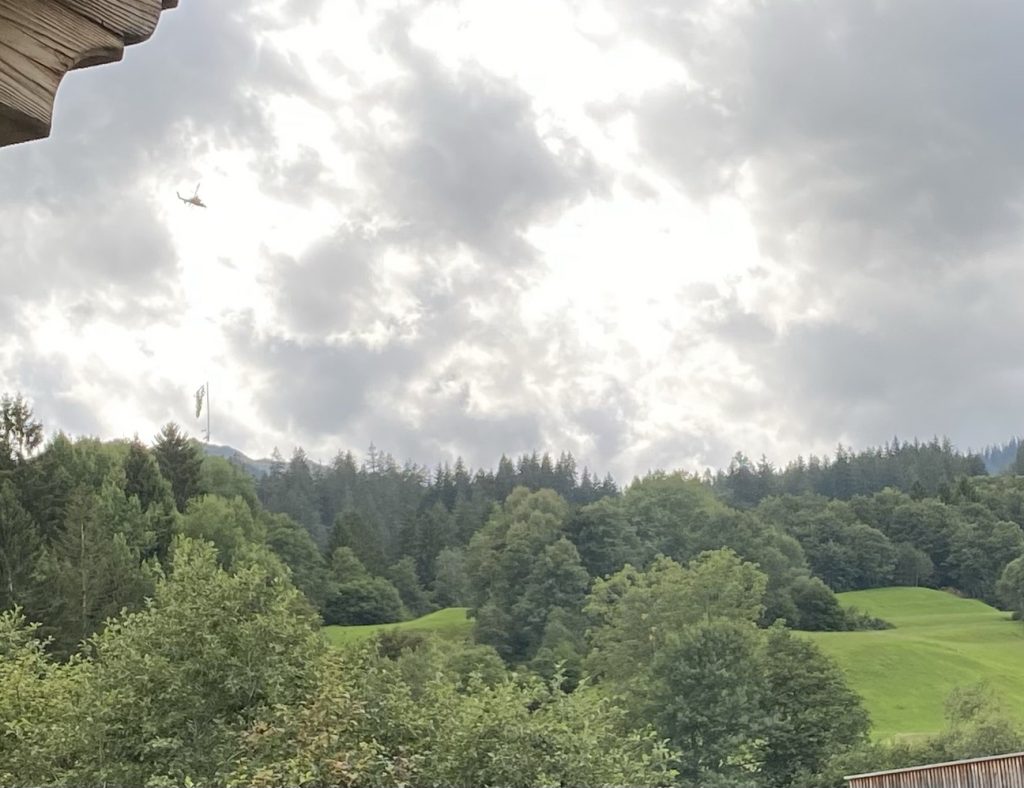
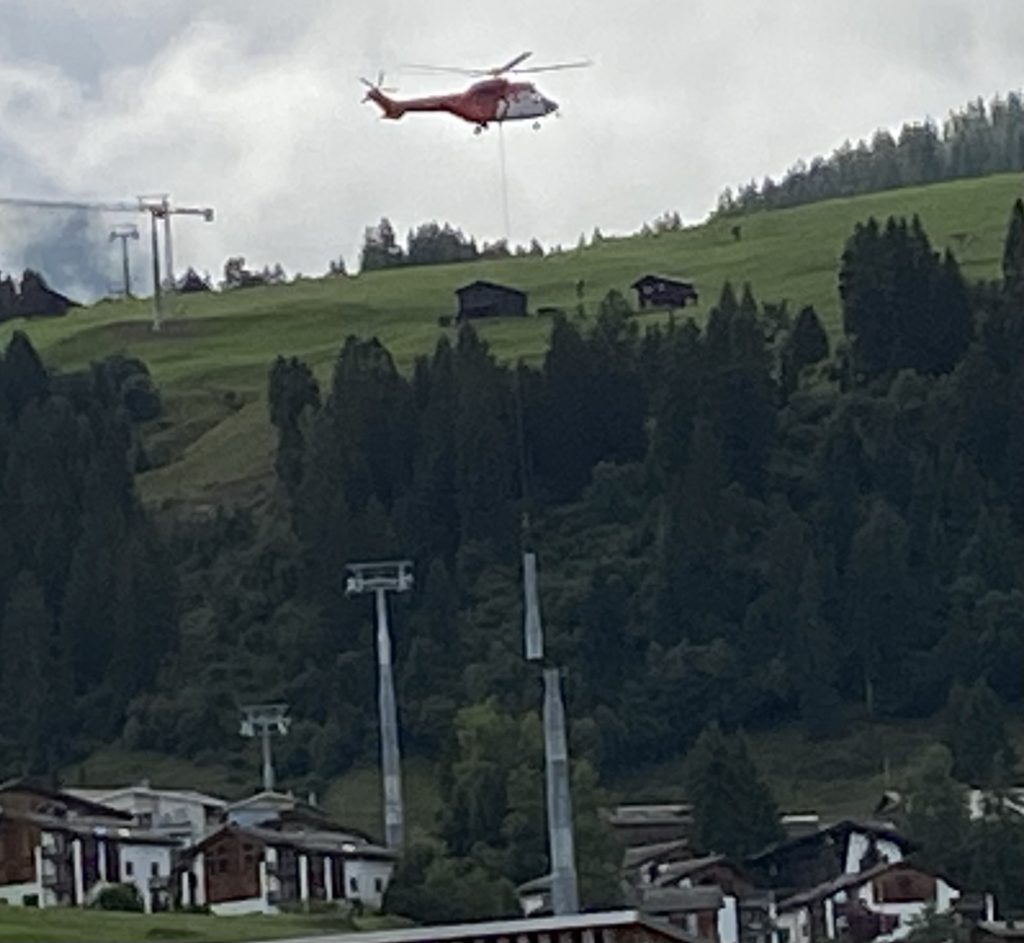
Health inequality
Almost all studies irrespective of the methods applied find that health is a matter of related to social inequality. The study by Lyons et al. (2023) in the Lancet demonstrates the same basic findings. This study uses the concept of multimorbidity and time until first and subsequent diagnosis as the measures of health. Mortality between different socioeconomic groups in Wales (UK) is largely confirmed. It is not only men beyond 70 years of age that face this unequal health trajectories, but already in the age group of 10- 20 years old teenagers the time until first diagnosis is different between the poor and wealthy neighbourhoods.
Differential health trajectories have a very early onset and seem to widen throughout the live course. The longitudinal nation-wide study in Wales allows to determine the impact of socioeconomic deprivation on health. The conclusions imply a combination of health and social policies to address health inequality. Clinical practice alone is unlikely to reverse the trends as onset of disease in form of first or subsequent diagnoses start from a very early age onwards in deprived areas.
Health as part of the curriculum in education systems is an obvious conclusion as well. This needs to take preventative approaches more seriously to give children and adolescents a more equal start into adulthood and professional working life. Education systems have to be reformed to become part of the solution rather than creating unhealthy trajectories themselves due to stress and unrealistic, unhealthy goal setting. Walking or cycling to school, more healthy school meals and learning about nutrition as well as processes of metabolism in the body should complement a more active school life-style. The dangers of developing ill health early seem to be greater nowadays than before. That is probably the most worrying news of the study. Sedentary life-styles seem to be a result of deprived neighbourhoods with less areas for comfortable, healthy walking or outdoor exercise.
It is an accumulation of effects due to neighbourhoods, commuting patterns and work-related health risk. Counties within regions grow more distant from each other as well as regions within countries. Youth is well aware of these health and social differentials. Eventually they will claim their “lives” or “equal chances” back again. Sociology has provided many clous to address these issues: Segregation or discrimination of groups of society, gentrification of neighbourhoods, intersectionality of health and social issues, to name just a few.
In order to target at-risk populations better and intervene with prevention rather than curative, we have to integrate social and health approaches much more than we used to do. The way forward is to improve the targeted, preventive approaches in order to improve the equality of chances to education, health and work.
(DOI: LINK to study)